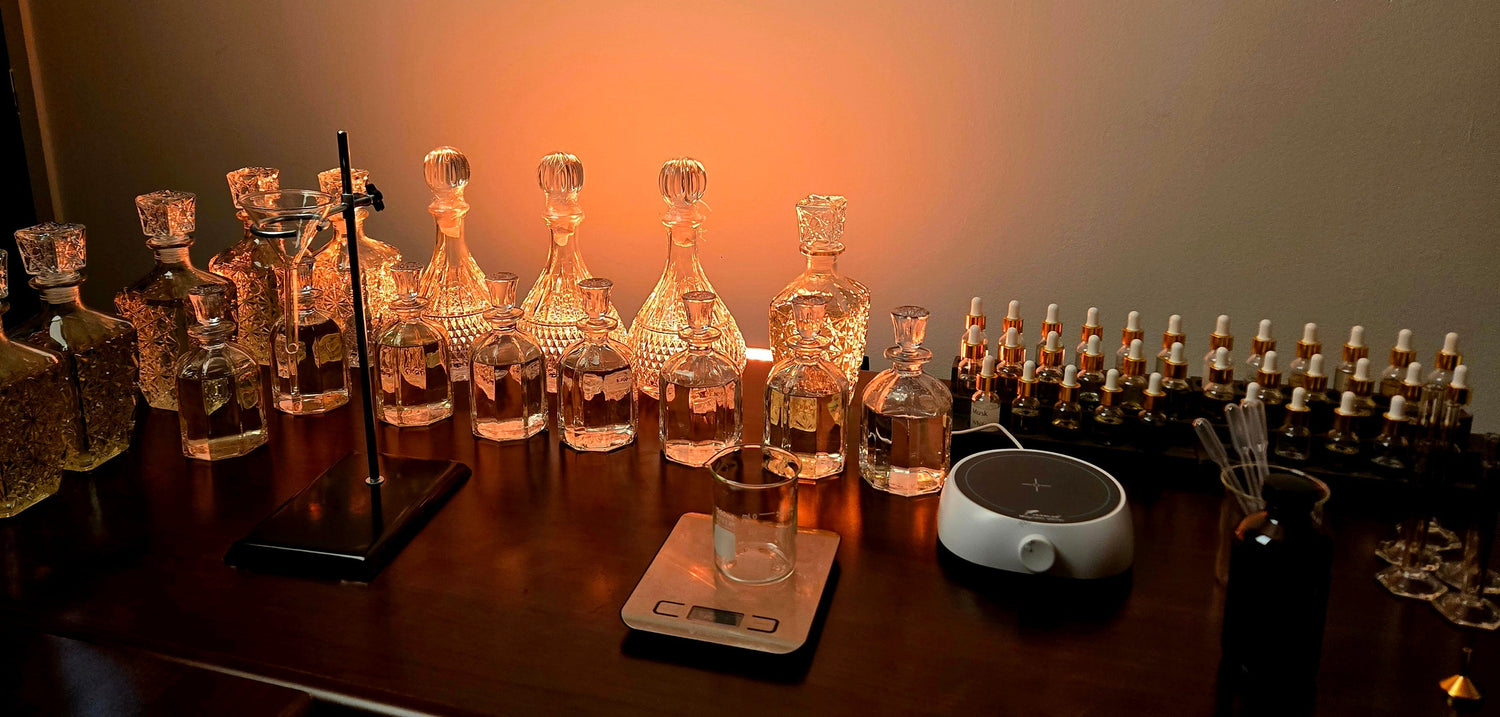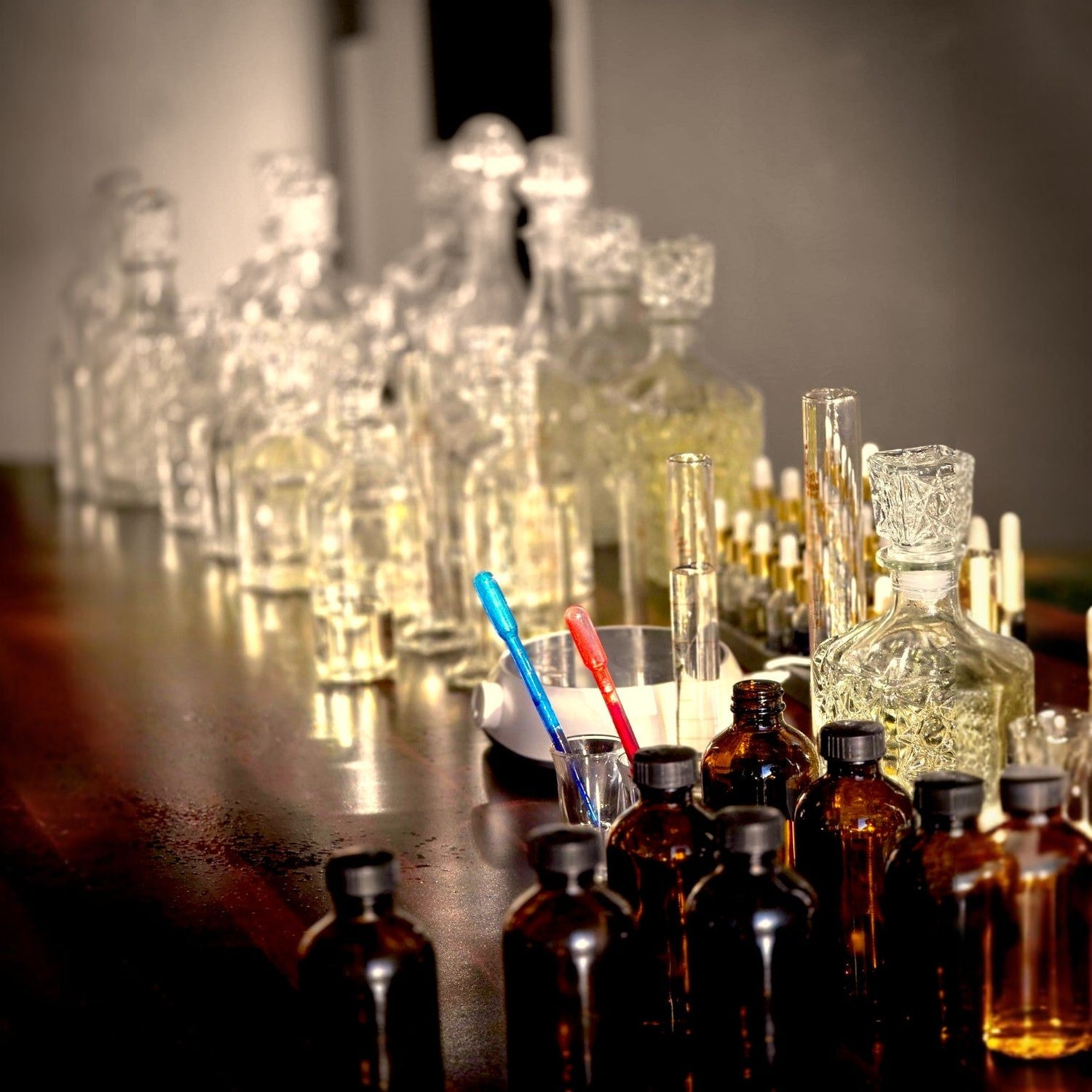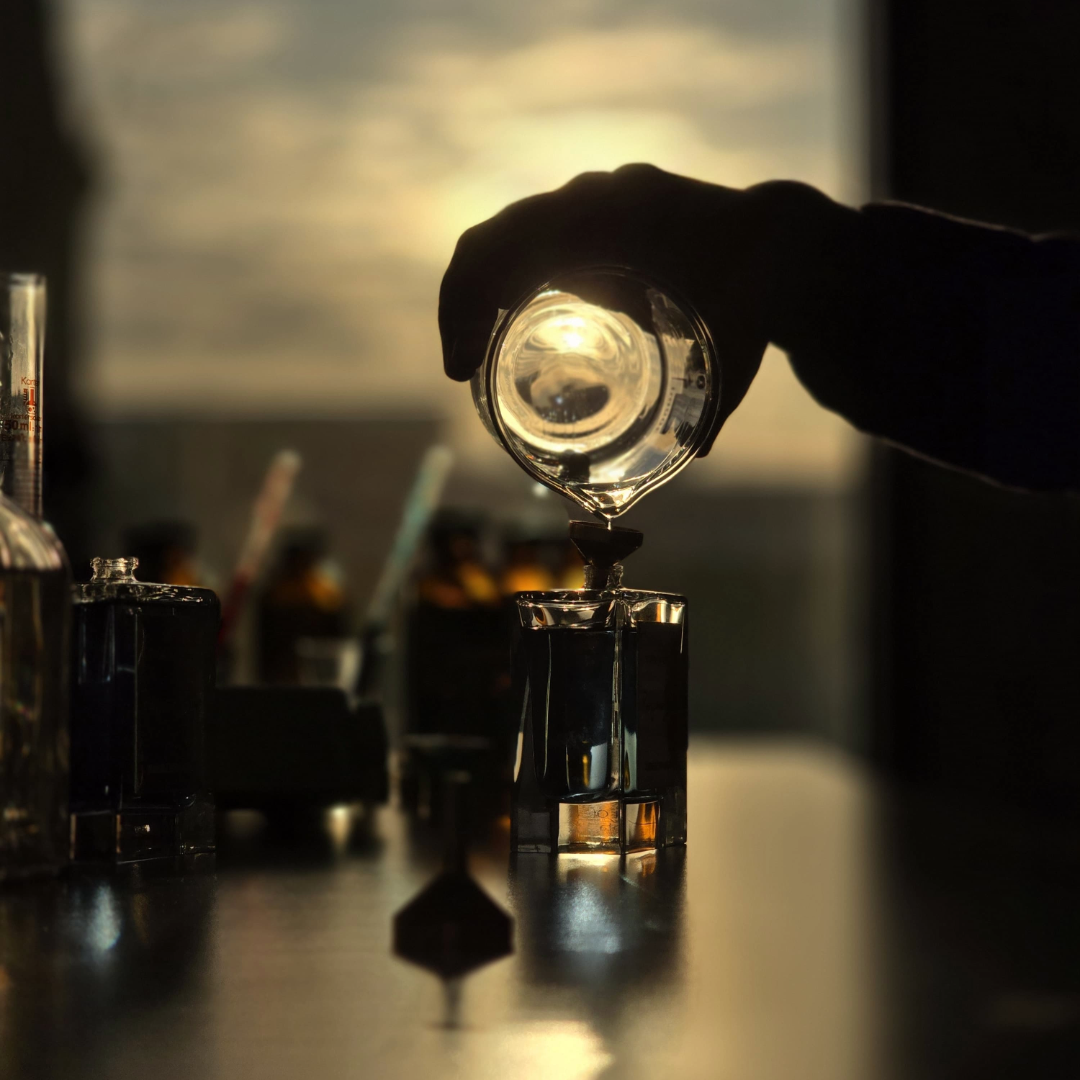Have you ever wondered why your perfume sometimes smells richer and lasts longer after sitting unused for a while? The answer lies in the science of fragrance maceration. At Yom & Layl Perfume Bar, our fragrances are freshly handcrafted and made to order with a high 40% oil concentration, ensuring they are immediately wearable upon delivery. Unlike boxed fragrances that sit in warehouses or on store shelves for months, ours are freshly prepared, meaning they haven't naturally macerated extensively yet. Understanding how to macerate perfume properly can significantly enhance your fragrance experience.
What Maceration Means in Perfumery?
Maceration is the gradual blending and aging of perfume ingredients—alcohol, essential oils, and aroma molecules—over time. When a fragrance is first mixed, the alcohol can dominate, making the scent feel sharp or underdeveloped. As the perfume rests, the molecules interact, creating a smoother, richer, and more balanced aroma.
The Science of Perfume Maceration: A Deep Dive into Fragrance Chemistry
Perfume maceration is far more than just "letting a fragrance sit"—it’s a complex biochemical transformation where raw ingredients evolve into a harmonious scent. At the molecular level, alcohol, essential oils, and aroma compounds undergo oxidation, esterification, and polymerization, fundamentally changing the perfume’s structure and behavior.
Here’s a detailed breakdown of the chemical and physical processes that occur during maceration:
1. Alcohol Evaporation & Solvation: The Foundation of Maceration
When a perfume is first mixed, ethanol acts as a solvent, holding fragrance oils in suspension. Initially, the alcohol’s sharpness can overpower delicate top notes. During maceration:
-
Gradual ethanol evaporation reduces the "alcoholic burn," allowing oils to dominate
-
Hydrogen bonding occurs between ethanol and oil molecules, subtly changing viscosity.
-
Solvation shells form around fragrance molecules, improving solubility and stability.
2. Oxidation: The Silent Sculptor of Scent
Exposure to oxygen (even in small amounts from spray-testing or headspace in the bottle) triggers key reactions:
- Terpene Oxidation
- Limonene (in citrus oils) oxidizes into carvone and carveol, shifting from zesty to woody.
- Linalool (in lavender) forms linalool oxide, adding a subtle powdery nuance.
- Aldehyde Polymerization
- Aldehydes (like C-12 MNA) dimerize, softening their metallic sharpness into creamy warmth.
- Vanillin & Coumarin Darkening
- Vanillin oxidizes into vanillic acid, deepening sweetness.
- Coumarin develops hay-like, tobacco tones over months.
Lab Note:
We test-spray each Yom & Layl fragrance after sealing to ensure proper spray function and to gently initiate oxidation by introducing oxygen.

3. Esterification & Transesterification: Creating New Aromas
Acids and alcohols in the blend react to form esters—new scent molecules!
-
Citronellol + Acetic Acid → Citronellyl Acetate (rosy → fruity).
-
Geraniol + Butyric Acid → Geranyl Butyrate (floral → peach-like)
Lab Note:
At Yom & Layl, we engineer our citrus accords knowing they'll evolve: the same limonene molecules that give freshness initially will slowly oxidize into lush lactones over weeks of maturation. Initial citrus-dominant compounds (limonene, citral) undergo gradual oxidative rearrangement during maceration, forming new lactones and terpenoid structures. This accounts for the observed shift from bright top notes to deeper tropical nuances in aged batches.
4. Polymerization: The Secret to Longevity
Heavy base notes (like oud, amber, or musk) contain large molecules that link together over time:
-
Polysaccharides in oud resin polymerize, amplifying its smoky depth.
-
Indole molecules (in jasmine) form oligomers, reducing their fecal sharpness into a velvety floralcy.
Lab Note:
We at Yom & Layl Perfume Bar use a 40% oil concentration because it allows our fragrances to macerate faster—the higher oil content means more raw material for polymerization, resulting in a richer, more complex scent profile in less time.
5. Molecular Alignment & Volatility Shifts
-
Top notes (e.g., citrus, herbs): Volatile molecules evaporate fastest initially. Maceration lets them "settle" into the heart notes.
-
Heart notes (e.g., rose, jasmine): Hydrogen bonding with ethanol smooths harsh edges.
-
Base notes (e.g., patchouli, sandalwood): Non-polar compounds aggregate, boosting longevity.
As a fragrance matures, its vapor pressure equilibrates, resulting in a more controlled and even 'bloom' on skin over time. This explains why well-macerated perfumes display superior diffusion and longevity compared to freshly blended batches.
Maceration isn’t just waiting—it’s orchestrated chemistry. Every hour of aging lets your perfume’s molecules dance into perfect harmony.
Want to geek out more? Try macerating half a bottle and comparing it to a fresh one—you’ll smell the science!





